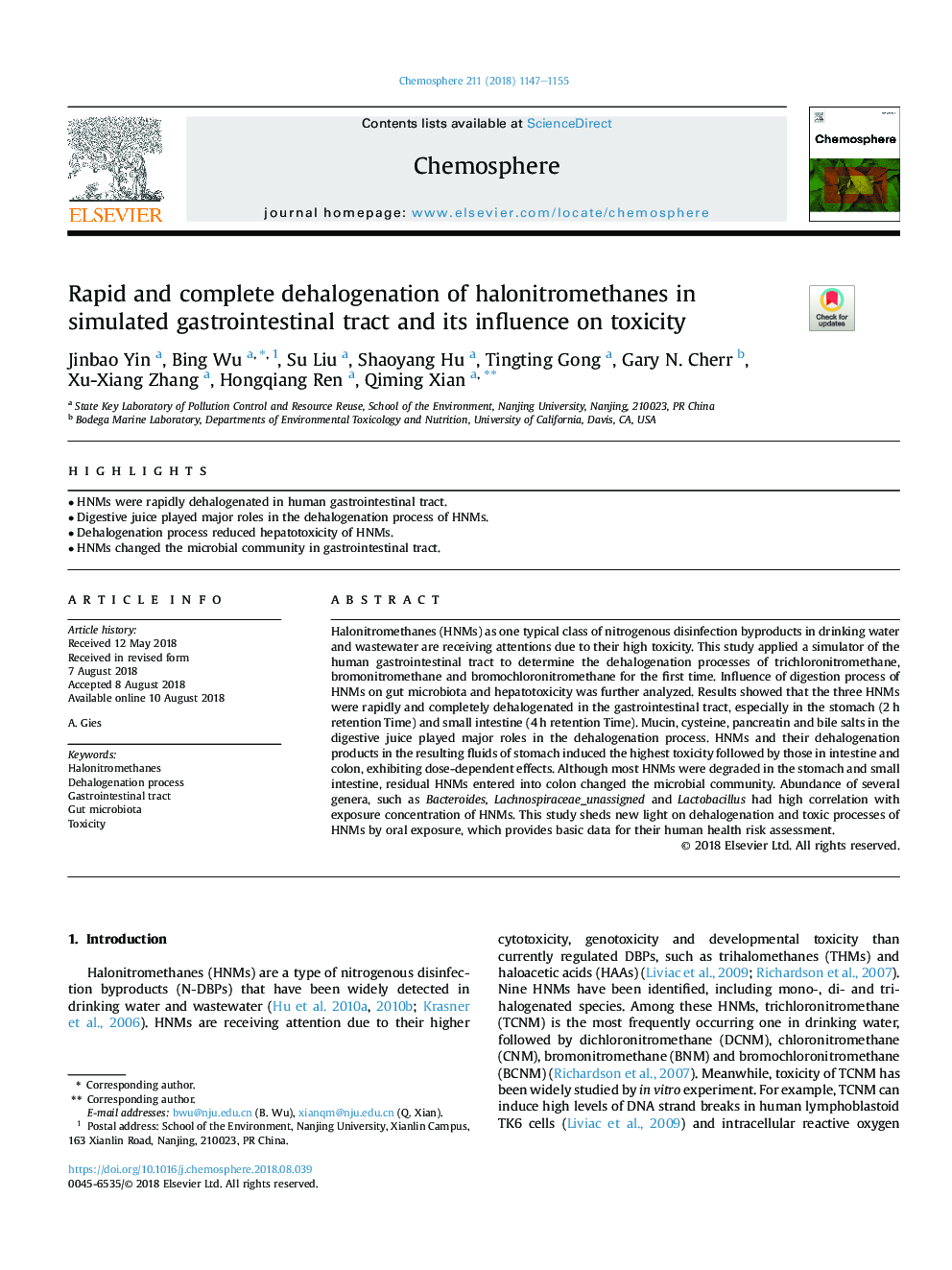| Article ID | Journal | Published Year | Pages | File Type |
|---|---|---|---|---|
| 8850353 | Chemosphere | 2018 | 9 Pages |
Abstract
Halonitromethanes (HNMs) as one typical class of nitrogenous disinfection byproducts in drinking water and wastewater are receiving attentions due to their high toxicity. This study applied a simulator of the human gastrointestinal tract to determine the dehalogenation processes of trichloronitromethane, bromonitromethane and bromochloronitromethane for the first time. Influence of digestion process of HNMs on gut microbiota and hepatotoxicity was further analyzed. Results showed that the three HNMs were rapidly and completely dehalogenated in the gastrointestinal tract, especially in the stomach (2â¯h retention Time) and small intestine (4â¯h retention Time). Mucin, cysteine, pancreatin and bile salts in the digestive juice played major roles in the dehalogenation process. HNMs and their dehalogenation products in the resulting fluids of stomach induced the highest toxicity followed by those in intestine and colon, exhibiting dose-dependent effects. Although most HNMs were degraded in the stomach and small intestine, residual HNMs entered into colon changed the microbial community. Abundance of several genera, such as Bacteroides, Lachnospiraceae_unassigned and Lactobacillus had high correlation with exposure concentration of HNMs. This study sheds new light on dehalogenation and toxic processes of HNMs by oral exposure, which provides basic data for their human health risk assessment.
Related Topics
Life Sciences
Environmental Science
Environmental Chemistry
Authors
Jinbao Yin, Bing Wu, Su Liu, Shaoyang Hu, Tingting Gong, Gary N. Cherr, Xu-Xiang Zhang, Hongqiang Ren, Qiming Xian,
